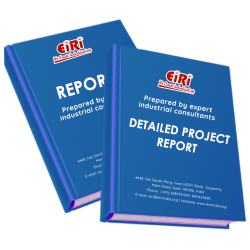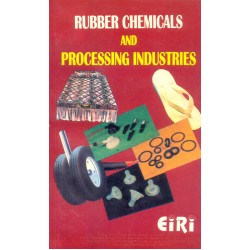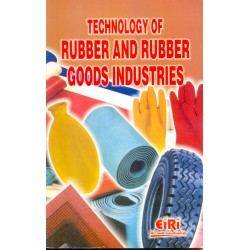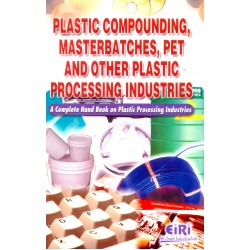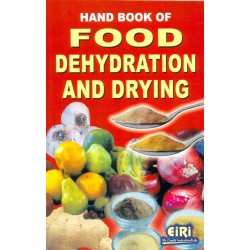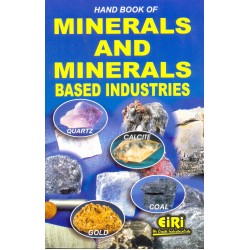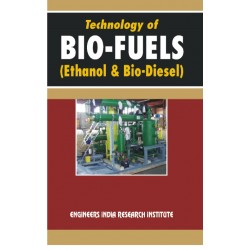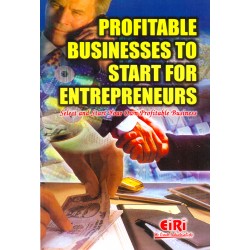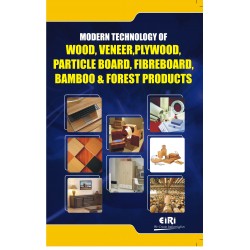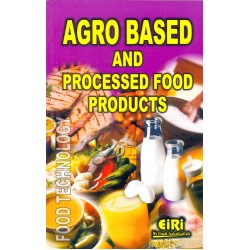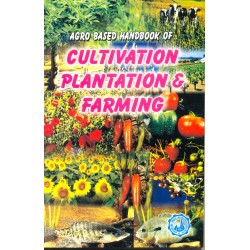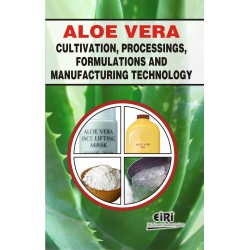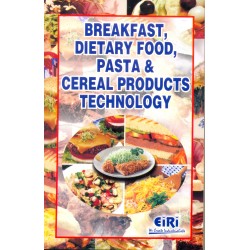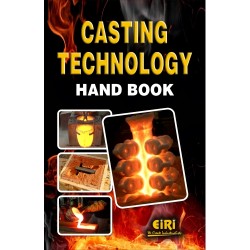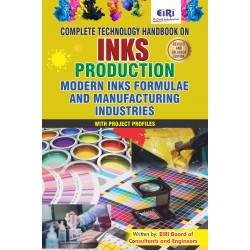modern rubber chemicals, compounds and rubber goods technology (hand book)

- More than 40 years of experience
- Managed by expert industrial consultants
- ISO 9001-2015 Certified
- Registered under MSME, UAM No: DL01E0012000
- 24/5 Research Support
Get your quesries resolved from an industry expert. Ask your queries before report or book purchase. - Custom Research Service
Speak to the our consultant to design an exclusive study to serve your research needs. - Quality Assurance
All reports are prepared by highly qualified consultants & verified by a panel of experts. - Information Security
Your personal & confidential information is safe & secure.
MODERN RUBBER CHEMICALS, COMPOUNDS AND RUBBER GOODS TECHNOLOGY
NATURAL RUBBER
Introduction
Sources and the Plantation Economy
Tapping of Natural Rubber (NR) Latex
Recovery of Natural Rubber from Latex
Coagulation, Processing of the Coagulate, Sheets, and Crepe
Smoked Sheets
Pale Crepe
Special Grades
Oil Extended Natural Rubber (OE-NR)
Deproteinated Natural Rubber (DP/NR)
Heveaplus MG Grades
Epoxidised Natural Rubber (ENR)
Thermoplastic NR
Depolymerised NR
Powdered or Particulate NR
Peptised NR
Classification of Hevea Rubber (TSR)
Technically Classified NR (TC)
Standardised Malaysian Rubber (SMR)
Other Technically Specified Rubbers (TSR)
Other Types of Caoutchouc
Guayule
Kok-saghyz
Ficus Elastica
Guttapercha and Balata
Structure, Composition and Properties of natural Rubber (NR)
Physical and Technological Properties of Natural Rubber (NR) (Raw Rubber and Vulcanisates)
Physical Properties
Processibility
Behaviour in Solvents
Compounding of Natural Rubber (NR)
Blends with Natural Rubber (NR)
Vulcanisation Chemicals
Metal Oxides
Activators
Vulcanisation Inhibitors
Protective Agents
Fillers
Softeners and Resins
Softeners
Resins
Factices
Process Aids
Process Aids
Processing of Natural Rubber (NR)
Mastication
Mixing
Mixing in Internal Mixers
Cooling Mills
Further Processing
Pre-warming
Processing in Extruders
Processing on Calenders
Vulcanisation
Properties of NR Vulcanisates
Mechanical Properties
Hardness
Tensile Strength
Elongation at Break
Tear Resistance
Elastic Rebound
Damping Properties, Dynamic Fatigue Resistance
Heat and Ageing Resistance
Heat Resistance
Ageing Resistance
Weather and Ozone Resistance
Low Temperature Flexibility
Compression Set
Swelling Resistance
Electrical Properties
Uses of Natural Rubber (NR)
Derivatives of Natural Rubber (NR)
Effect of Storage on Properties of Natural Rubber
Experimental
Results and Discussion
Raw Rubber Properties
Visual Observation
Breakdown Characteristics
Technical Properties
Natural Rubber Latex Protein: A Concomitant Manufacturing Material
Manufacturing Material Requirements
Production Protein Tests
Building, Equipment and Environment
cleaning and Sanitation
Different Equipment
Die Swell and Wall Slip Behaviour of Natural Rubber
Die Swell
Wall Slip
Procedure
Crafting of Vinyl Monomers onto Natural Rubber
Formation of Graft Polymer
Procedure
Effect of Initiator Concentration
Effect of Temperature
Effect of Reaction Medium
Competitive Products
BASIC CONCEPTS OF SYNTHETIC RUBBER
Introduction
Basic about the Production of SR
Monomers for SR Production
Some Basics about polymerisation
Emulsion Polymerisation
Ionic Polymerisation
Co-ordination Polymerisation or Metal Complex Polymerisation
Solution Polymerisation
Suspension Polymerisation
Some Fundamentals about Polyaddition and polycondensation Reactions
Structure of Polymers and the Determination of Structure
Repeat Unit Structure of Polymer Chains
Mlecular Weight and Molecular Weight Distribution
Linearity Branching
Monomer Sequence in Co-polymers
STYRENE BUTADIENE RUBBER
Introduction
Manufacture of SBR
E-SBR (Cold Rubber)
OE-E-SBR, Carbon Black Masterbatch
Hot Rubber
L-SBR
Structure of SBR and its Influence on Properties
L-SBR with Higher 1,2 Content
Random L-SBR
Segmented L-SBR
Tri-block L-SBR
Comparison of Solution and Emulsion SBRs
Compounding of SBR
Blends
Protective Agents
Fillers
Softeners
Factices
Resins
Process Aids
Processing of SBRProperties of SBR Vulcanisates
Properties of E-SBR Vulcanisates
Mechanical Properties
Dynamic Properties Ageing Resistance, and Abrasion Resistance
Electrical Properties
Resistance to Fluids
Properties of L-SBR Vulcanisates
Vulcanisates from L-SBR with a Random Distribution of Styrene
Vulcanisates from L-SBR with a Blocky Monomer Distribution
L-SBR with SBS Triblocks
Properties of Vulcanisates from OE-SBR and Black Masterbatches
OE-SBR (Oil Extended SBR)
Carbon Black Masterbatches
Uses of SBR
E-SBR
Random L-SBR
Blocky L-SBR
Thermoplastic SBR
Styrenic Block Co-Polymer Compounds
Applications
High Temperature TPE Application
High Clarity TPE Application
High Flow Injection Moulding
Over-Moulding/Two-Shot Moulding
Competitive Products
POLYBUTADIENE, POLYCHLOROPRENE AND POLYISOPRENE RUBBERS
Introduction
Polybutadiene
Manufacture of Polybutadiene (BR)
Ti-BR
Co-BR
Ni-BR
Nd-BR
Li-BR
Alfin-rubber
Structure of BR and its Influence on Properties
Macro-structure
Micro-structure
Compounding of ER
Blends
Vulcanising Agents
Protective Agents
Fillers and Plasticisers of Softeners
Processing of BR
Properties of BR Vulcanisates
Mechanical Properties
Dynamic and Ageing Properties
Traction
Uses of BR
Tyres
Technical Rubber Goods
Liquid Reactive BR Grades
Impact Modifiers for Plastics
Competitive Products
Polychloroprene Rubber (CR)
Compound Design
Manufacture of Polychloroprene (CR)
Structure of CR and its Influence on Properties
Viscosity
Micro Structure
Chlorine Concentration
Compound of CR
Blends
Vulcanising Agents
Peroxide Cures
Protective Agents
Fillers
Softeners
Factice
Process Aids
Processing of CR
Properties of CR Vulcanisates
Mechanical Properties
Heat and Ageing Resistance
Flammability
Low Temperature Properties
Tendency Towards Crystallisation
Resistance to Solvent and Chemicals
Permeation
Electrical Conductivity
Use of CR
Competitive Products
Polyisoprene (Synthetic Natural Rubber)
Manufacture of IR
Ti-IR
Li-IR
Structure of IR and its Influence on Properties
Ti-IR
Li-IR
Compounding of IR
Ti-IR
Li-IR
Processing of IR
Properties of IR Vulcanisates
Ti-IR
Li-IR
Uses of IR
Competitive Products
Halogenated Co-Polymers from Isoprene and Isobutylene (Ciir and Biir)
Manufacture of Ciir and Biir
Structures of Ciir and Biir, and their Influence on Properties
Compounding of Ciir and Biir
Processing of Ciir and Biir
Properties of Ciir and Biir Vulcanisates
Uses of Ciir and Biir
Competitive Products
BUTYL AND NITRILE RUBBER
Introduction
Manufacture of Butyl Rubber (IIR)
Structure of IIR and its Influence on Properties
Macro structure
Unsaturation
Stabilisers
Compounding of IIR
Blends
Vulcanisation Systems
Protective Agents
Fillers
Softeners
Process Aids
Processing of IIR
Properties of IIR Vulcanisates
Mechanical Properties
Heat and Ageing Resistance
Low Temperature Flexibility
Permeation
Use of IIR
Competitive Products of Butyl Rubber (IIR)
Nitril Rubber (NBR)
Manufacture of NBR
Structure of NBR and its Influence on Properties
Viscosity
Polymerisation Temperature
Microstructure
Pre-crosslinking
Acrylonitrile Content
Acrylic Acid Terpolymers (X-NBR)
Stabilisers
Thermoplastic NBR
Compounding of NBR
Blends
Vulcanising Agents
Protective Agents
Fillers
Plasticisers
Factices
Process Aids
Processing of NBR
Properties of NBR Vulcanisates
Mechanical Properties
Heat and Ageing Resistance
Low Temperature Flexibility
Swelling Resistance
Permeation
Other Properties
Hydrogenated NBR (H-NBR or ENM or HSN)
Uses of NBR
Competitive Products of NBR
MISCELLANEOUS RUBBERS
Introduction
Acrylates
Manufacture of Acrylic Rubber (ACM)
Structure of ACM and its Influence on Properties
Influence of Acrylate
Co-Monomers
Saturation
Compounding of ACM
Blends
Vulcanising Agents
Stabilisers
Fillers
Softeners
Process Aids
Proporties of ACM Vulcanisates
Mechanical Properties
Ageing heat and Ozone Resistance
Swelling Resistance, Resistance to Chemicals
Low Temperature Flexibility
Uses of ACM
Competitive products
Ethylene/Acrylate Copolymers (EAM)
Chlorinated Polyethylene (CM)
Manufacture f CM
Structure of CM and its Influence on Properties
Compounding of CM
Blends
Vulcanising Agents
Stabllisers and Protective Agents
Fillers
Softeners
Process Aids
Processing of CM
Properties of CM Vulcanisates
Uses of CM
Competitive product
Chlorosulphonated Polyethlene
Manufacture of CSM
Structure of CSM and its Influence on Properties
Compounding of CSM
Vulcanising Chemicals
Antioxidants
Fillers, Plasticisers
Processing of CSM
Properties of CSM Vulcanisates
Use of CSM
Competitive Products
Polynorbornene (PNR)Structure of Properties
Compounding
Processing
Properties of Vulcanisates
Uses of PNR
Other Polymers
Special Butadiene Co-polymers
Vinylpyridine Rubber
Piperylene Rubber
Special Isoprene Co-polymers
Dimethylbutadiene Polymers (Methyl Rubber)
Special Polymers from Ringopening Polymerisations
Trans polypentenamer (TPA)
Trans polyoctenamer (TOR)
Alkylenesulphide Rubbers (ASR)
Cross-Linkable Polyethylene (X-LPE)
Recently Developed Novel Elestomers
Polyphosphazene Rubber
Propylene Oxide Rubber (PO and GPO)
Polysulphides Rubber (TM)
Manufacture of TM
Structure of TM and its Influence on Properties
Influence of Monomers
End Groups
Molecular Weight
Sulphur Content
Compounding of TM
Vulcanising Agents
Fillers
Softeners
Process Aids
Processing of TM
Properties of TM Vulcanisates
Use of TM
Hot vulcanisable TM
Competitive products
Polyester and Polyether Rubber (OT)
Paraplex (07)
Norepol
Polyesters Based on Polyethylene Terephthalate and Polyethylene Glycol (Polyetheresters) (TPE-E)
Polyether Amides (TPE-A)
Competitive Products
Nitrosofluoro Rubbers
LATEX PRODUCT MANUFACTURING TECHNOLOGY
Introduction
Production and Testing of Latex Concentrate
Natural Rubber Latex
Synthetic Rubber Latex
Principles of Latex Compounding
Stabilisers
Vulcanisation System
Anti-degradive system
Fillers
Processing Additives
Gelling System
Pigments
Dipped Product Manufacture
Straight Dipping
Coagulant Dipping
Heat-Sensitive Dipping
Nitrile Latex-A Speciality Latex
Composition and Types of Nitrile Latex
Manufacturing of Latex
Application
Elastomeric Thread production
Stage 1:Latex Compound Preparation
Stage-2 Latex Extrusion
Stage 3:Drying and Vulcanisation
Stage 4:Finishing
Latex Foam Rubber
Processes Used in the Manufacture of Latex Foam
Carpet Backing Applications
Latex Binders
Rubberised Hair and Coir
Leatherboard and Fibre Board
Paper
Non woven Fabric
Latex Adhesives
Miscellaneous Latex Applications
Latex Cement Mixtures
Bitumen Mixes
Rubber Films
Latex Tubing
Latex Casting
Textile Uses
FOAM PRODUCTS MANUFACTURING TECHNOLOGY
Introduction
Processes for Foam Manufacture
Batch Process
Continuous Foaming Process
Talalay Process
Compound Design and Production of Foam Through the Dunlop Process
Gelling Agents
Formulations of Foam Rubber Based on Polychloroprene (Neoprene) Latices
Principles of Gelation
Delayed-Action Gelling Systems
Mechanism of Delayed Action Gelling by the Fluoro Complexes
Gelling Properties of Special Latices
Physical Characteristics of Gelling Defects Occurring in Foam Production and Remedial Measures
Testing and Quality Control of Foam
Identation Hardness Index
Compression Set
Colour
Odour
Flexing Test
Ageing Test
Metallic Impurities
Environment Friendly Expandable Graphite A New Kind of Flame Retardant for Rubber Latex Foam
Expandable Graphite
Mechanism of Expansion
Expandable Graphite Work as a Flame Retardant
Exploring the Need
Selection of Effective Flame Retardant EG on the basis of Expansion
Materials and Methods
Test Methods
Preparation of Foam
Discussion
PLASTICISERS, FACTICE AND BLOWING AGENTS
Introduction
Plasticisers and Processing Aids
Classification
Mineral Oil Plasticisers
Paraffines and Ceresine
Cumarone and Indene Resins
Petroleum Distillation Residues
Fatty Acids, Fatty Acid Derivatives, process Aids
Fatty Acids
Metallic Soaps
Fatty Acids Esters and Fatty Alcohol
Pentaerythritol Tetrastearate
Emulsion Plasticisers
Polyethyleneglycol Fatty Alcohol Ethers
Animla and Vegetable Fats, Oils and Resins
Raw Wool Fat (Lanolin)
Fat Emulsions
Vegetable (Plant) Oils
Tall Oil
Animal Glue
Rosins
Abietic Acid
Coal Tar Pitch
Zewa Resins
Synthetic Plasticisers
Ether Plasticisers
Polyether and Polyether Thioethers
Thioether Esters
Ester Plasticisers
Phthalic Acid Esters
Adipic Acid and Sebacic Acid Esters
Trimellitates
Phosphoric Acid Esters
Other Ester Plasticisers
Chlorinated Hydrocarbons
Polycondensation and Polymerisation Products
Polyester of Adipic Acid Sebacic Acids and 1,2-Propyleneglycol
Alkyd Resins
Polymerisation Products from Croten Aldehyde
Liquid BR, SBR, NBR and EPDM
Tackifiers
Factice
Use and Properties
Advantages
Selection
Influence on Properties
Application Areas
Oxygen Factice
Isocyanate Fatice
Specialty Factices
Liquid Sulphur or Sulphurchloride Fatices
Blowing Agents
Inorganic blowing Agents
Organic Blowing Agents
Aza Compounds
Diazoamino compounds
Azonitrile
Azodicarbonamide (ADC)
Hydrazine Derivatives
Benzenesulphohydrazide (BSH)
Benzene 1-3 disulphohydrazide
Diphenyloxide 4,4 disulphohydrazide
p-Toluenesulphonic Acid Hydrazide
N-Nitroso Compounds
N,N Dinitrosopentamethylenetetramine (DNPT)
N,N' Dimethyl-N,N' Dinitrosophthalamide
Comparison of Important Blowing Agents
MOULDING AND FINISHING OF RUBBER COMPONENTS
Introduction
Blank Preparation
Blank Heating
Water Baths and Ovens
High Frequency and Microwave heating
Compression Moulding
Compression Clamp Moulding
Transfer Moulding
Within Mould Transfer
Transfer Press Moulding
Flashless Moulding
Injection Moulding
Moulding Shrinkage
Basic Principle
Determination of the Degree of Shrinkage
Mould Jurication
Materials for Special Effects
Mould Release Agents
Permanents Release Agents
Semi-Permanent Release Systems
Curing Cycles Achieveable without Cleaning any Mould
Mould Cleaning
Finishing or Rubber Components
Flash and Spew Removal
Hand Trimming
Machine Trimming (Roller Trim)
Buffing
Low Temperature Tumbling
Punching
Grinding
Shot Blasting
Painting and Lacquering
Polyurethane Lacquer
Influence of Composition on Lacquer Coatings
Drying Oils
Chemical Surface Treatment
Computer-Aided Mould Design
Simple Moulds
More Intricate Moulds
Computer Programmes
COMPOUNDING INGREDIENTS AND COMPOUND DESIGN
Introduction
Ingredients and formulation of a Mix
Objective in Using a Particular Ingredient
Relative Rating of Typical Polymer Vulcanisates
Cross Linking System
Selection of Ingredients
Compatibility The Solublity Parameter Concept
Compound Design
Experimental Design
Single Ingredient Variability
Two Ingredient Variability
Multi Ingredient Variability
Management of Compound Related Data
Summary of Compound Related Data
Formulation
Weighing Instructions
Mixing Instructions
Quality Control
Compound Properties
Ingredients
Storage Techniques
FOOTWEAR TECHNOLOGY
Introduction
Types of Footwear
Plimsolls
Components and Their Treatment
Operations Required to Build up Plimsolis
Built up shoes
DVP Shoes
Dip Shoes
Plastic Footwear
Slush Moulding
Injection Moulded PVC Shoes
Hand Assembled and Hot Air Vulcanised Product
Compression Moulded Industrial Rubber Boots
Direct Moulded process for Shoe Bottoming
Cellular Rubber Soled Footwear
Solid Rubber Soled Footwear
Injection Moulded Rubber Sole and Heel Units
Resin Rubber and Microcellular Soling
Adhesive Attachment
Special Purpose Footwear
Safety Footwear
Conductive and Antistatic Footwear
General Compounding of Footwear Compounds
Types Expanded Microcellular Soling
Hawai Slippers
Medium Hard Microcellular Soling
Hard Microcellular Soling
Selection of Compounding Ingredients
Elastomers
Fillers
Method of Manufacturing Slings
Quantity of Blowing Agent
Volume Loading of Mould Cavity
Time and Temperature of Pre-cure
Moulding Pressure Applied During Vulcanisation
Post cure
Quality Control of Raw Materials
Natural Rubber
Synthetic Rubber
Crump
Fillers
Processing Aids
Blowing Agent
Accelerator/Antioxidants
Sulphur
Trouble Shooting Guide
Testing of Finished Product
Specific Gravity or Relative Density
Hardness Test IRHD (International Rubber Hardness Tester)
Heat Shrinkage
Compression Set
Split Tear Strength
Ross Flex Testing
Safety Measures
Recent Developments in Footwear Technology
Material
Process
Micro cellular
Adhesives
Polyurethane
CONVEYOR BELT TECHNOLOGY
Introduction
Materials
Carcass Reinforcement
Cotton
Rayon
Polyamide (Nylon)
Polyester
Aramid
Steel
Polymers
Natural Rubber (NR)
Styrene Butadiene Rubber (SBR)
Polyisoprene (IR)
Polybutadiene (BR)
Butyl (BR)
Nitrite (NBR)
Chloroprene (CR)
Ethylene Propylene Diene Monomer (EPDM)
Polyvinyl Chloride (PVC)
Polyurethane (PU)
Belt Constructions
Light Belting
Multiply
Straight Warp
Solid Woven (SW)
Steel Cord
Steel Woven Fabric
Breakers
Properties of Belt
General
Specified
Application
Troughability
Pulley Diameters
Take up Allowance
Belt Growth
Transition Distance
Vertical Curves
Impact Resistance
Load Support
Belt Quality Grades
General Purpose
heat Resistance
Oil Resistance
Ozone Resistance
Cover Gages
Fire Resistance (FR)
Steel Cord
Belt Selection
Belt Strength Calculations
Elective Tension
Driving or Slack Side Tension
Safety Factors (SF)
Conveyor System
Belt
Installations
Manufacturing
Lightweight Belting
Plied Textile Belting
Solid Woven
Steel Cord
Vulcanisation
Quality Issues
Quality Control
Quality Assurance
Total Quality Management
Belt Joining
Mechanical Fasteners
Spliced Joint
Steeped ply
Finger Splice
Steel Cord
V-BELT AND FAN BELT MANUFACTURING TECHNOLOGY
Introduction
Components and Function of Power Transmission Belts
Fundamental Manufacturing Process
Materials in V-Belt Composition
Outline of Materials processing
Rubber Processing
Main Points in Rubber Processing for V-Belts
Characteristics and Control Factors of Short Fibre Reinforced Rubber (SFRR)
Accuracy and Control Factors for Sheet Thickness
Material
Processing Conditions
Apparatus
Practice of Rubber Processing
Mixing
Sheeting
Transfer and Storage
Preparation for Determining Vulcanising Conditions
Cord Processing
Main Points in Cord Processing for V-Belts
Cord Properties
Mechanical Properties
Adhesion Property
Post Processibility
Practice of Cord Processing
Selection of Yarn
Yarn Twisting
Adhesion and heat Treatments
Post processing
Canvas Processing
Rubber Coating
Method for Processing Wrapped V-Belts
Building
Skiving
Wrapping
Vulcanising
Type of Vulcanisation
Wrapped V-Belt Vulcanisation
Sleeve Vulcanisation
Continuous Vulcanisation
Marking
Moulding Method
Printing Method
Methods for processing Raw Edged V-Belts
Building
Vulcanisation
Cutting
Drum Cutter
Two Roll Cutting
Detection of Slab Position and Feedback Control
Belt Cutting Conditions
Method for Processing V-Ribbed Belts
Control Factors of Grinding Resistance
Grinding Resistance
Practice of Grinding
Types of Grinding Stone
HOSE TECHNOLOGY
Introduction
High Pressure Hydraulic Hose
Wire Braid Hoses
Spiral Hoses
Hot Water Washing Hose
Water Blast Hose
Thermoplastic Hydraulic Hose
Automotive Hose
Coolant Hoses
Power Steering Hoses
Fuel Hoses
Air Brake and Vacuum Brake Hose
Brake Hoses
Turbocharger Hose
Oil Cooler Hoses
Industrial Hose
Air, Water and Welding Hose
Steam Hose
RUBBER SPORTS GOODS MANUFACTURING TECHNOLOGY
Introduction
Golf Balls
Specification
Wound Golf balls
Golf Ball Centres
Thread and Winding
Cover Moulding
Finishing
Nonwound Golf Balls
Solid Balls
Two Piece Balls
Golf Ball Moulds
Tennis Balls
Specification
Modern Manufacturing Technology
Half shell Moulding
Core Manufacturing
Melton Cloth
Core Covering
Covered Ball Moulding
Testing and Marking
Future Developments
Squash Balls
Specifications
ISRF Ball (softball)
USSRA Ball (hardball)
Squash Ball Manufacture
Table Tennis Bat Rubbers
CABLE TECHNOLOGY
Introduction
Constructional Elements of Polymer Insulated Cables
Metallic Conductors
Polymeric Materials for Cable Insulation
Crosslinkable Polythylene (XLPE)
Enthylene Propylene Rubber(EPR)
Silicone Rubber
Protective Sheaths
Thermoplastic Sheaths
Polyamide (PA) and polyurethane (PU)Elastomer Sheath
Amour
Electrical Screening
Semiconducting Shields
Metallic Screening
Designation of Cables
Voltage Designation
Additional Symbols for Cables
Cable Design
Current Carrying capacity and Selection of Conductor Cross sectional Area
Electrical Strees and Insulation Thickness
Dielectric Properties
Compound Design
Manufacturing Techniques
Conductor Forming: Copper Wire Drawing and Annealing
Extrusion
Curing processes
Batch Curring
Continuous Curing
Mitsubishi Dainichi Continuous Vulcanisation (MDCV) Long Land Die Process
Liquid Curing
Infrared Curing
Special Purpose Elastomeric Cables
Survival (FS) Cables
Silicone Rubber
Insulated FS Cables
Mica/Glass and EPR Insulated FS Cables
Radiation Resistant Cables
RUBBER TO METAL BONDING COMPONENTS
Introduction
Materials
Elastomers
Metals and Other Ragid Substrates
Manufacturing Methods
Metal Preparation
Adhesive Application
Moulding
Adhesives
Broad Purpose Adhesives
Specially Elastomer Adhesive
Thermoplastic Elastomer Adhesives
Testing
Primary Bond
Environmental Resistance
RUBBER-COVERED ROLLS
Introduction
Design of Rubber Rolls and Choice of Materials
Chemical Resistance
Solvent Swelling
Chemical Attack
Heat Resistance
Physical Properties
Hardness and Thickness of Rubber
Economic Factors
Process of Rubber Roll Manufacturing
Preparation of Core and Rubber to - Metal Bonding
Forming of Rubber Covering
Curing
Allowance for Core
Allowance for Ebonite
Allowance for Rubber Covering
Grinding and Finishing
Surface Treatment
Special Comments
Dimensional Standards
Crown
Static Balance
Dynamic Balance
Kinematic Balance
Speciality Rubbers
Industrial Rolls
Paper Mills Rolls
Steel Mill Rolls
Printing Rolls
Appropriate Strength
Resistance to Oils and Solvents
Resistance to Glaze
Correct Dimensional Accuracy
Tanning Industry Rolls
Rolls for Plastic Industry
Polyethylene Extrusion and Lamination
Polyethylene Printing
PVC Processing
Textile Mill Rolls
Rolls for Foodstuff Industry
Other Applications
SEALING TECHNOLOGY
Introduction
Physical and Chemical Considerations
Selection of Elastomer
Sealing Configurations
O-ring
The Operating Environment
Friction
Wetting Phenomenon
Lewis Acid-Base Considerations
Fillers
Environmental Considerations
Elastomer Interactions
Liquid-Elastomer Interactions
Gas Elastomer Interactions
Heat
Cold
Dynamic Mechanical Properties
Relaxation processes
Compression Set
Ageing
The Moulding process
NITRILE RUBBER AND ITS APPLICATION IN CONSTRUCTION INDUSTRY
Introduction
Rubber in Concrete
Selection Criteria for a Good Liner Material
Experimental
Operations
Experimental Trials
Results and Discussions
Observations from the Experiments Conducted on NRL and NBR
Assumptions
RUBBER RESIN PRESSURE SENSITIVE ADHESIVE TAPE TECHNOLOGY
Introduction
Pressure Sensitive Adhesive Components
Tackifying Resins
Plasticisers
Curing Agents
Antioxidants
Fillers
Solvent based Natural Rubber Adhesives
Backings
Dynamic Properties of Rubber Resin Mixtures
Test Methods
TEST METHODS IN RUBBER INDUSTRY
Introduction
Standardisation in Various Countries
U.S.A.
Great Britain
Germany
Other Countries
Part-1, Natural Rubber Latex
Physical Tests
Density
Total Solids
Dry Rubber Content (DRC)
Non Rubber Solids
Sludge
Viscosity
Surface Tension
Mechanical Stability
KOH Number
VFA Number
Nitrogen
Total Ash
Metallic Constituents
Boric Acid
Part-II Synthetic Latices
Bound Styrene Content
Total Bound Styrene for Styrene Reinforced SBR
Bond Acrylonitrile Content
Part-III Test Methods in Rubber Industry Natural Rubber (Raw)
Chemical Tests
Volatile Matter
Dirt
Ash
Solvent Extract
Nitrogen
Copper
Manganese
Iron
Physical Properties
Viscosity by the Shearing Disc Viscometer
Rapid Plasticity of Raw Rubber and Unvulcanised Compounded Rubber
Plasticity Retention Index (PRI)
Colour
Part IV-Test Methods in Rubber Industry (Raw Synthetic Elastomers)
Moisture
Ash
Determination of Organic Acid Soap and Solvent Extract
Determination of Bound Styrene Content
Acrylonitrile Butadiene Rubber
Volatile Matter
Solvent Extract
Organic Acid
Soap
Ash
Aerylo nitrile content
Volatile Matter
Ash
Butadiene Rubber
Volatile Matter
Ash
Determination of 2,6-di-tert-butyl14-methyl phenol
Determination of Micro-structure
Determination of Unsaturation
Curing Characteristics of Natural and Synthetic Elastomers
Rubber Mixed with Vulcanising Agent
Uniformity in Natural Rubber
Styrene Butadiene Rubber Emulsion Polymerised General Purpose Types
Styrene-Butadiene Rubber (SBR) Oil Extended non-pigmented, Emulsion polymerised, General Purpose, 1700 Series B.S. 3650-1976
Raw Chioroprene
Raw Chloroprene
Raw ISO-Buteneisoprene Rubber (IIR of Buty) B.S. 4470-1980
Raw Non-oil Extended Isoprene Rubber Vulcanisation Characteristics of B.S. 5474-1977
Reclaim Rubber -IS 7490-1974
Part V-Test Methods on Compounded and Vulcanised Elastomers
Tensile Stress Strain Properties
Determination of Tension
Tear Resistance
Ply Separation
Cut Growth
Hardness
Methods for Curved Surfaces
Hysteresis Loss
Rubber Deterioration Surface Cracking
Resistance to Ozone Cracking Under Statioconditions
Abrasion Resistance
Swelling in Oil,
Rubber Deterioration by Heat and Oxygen
Oxygen Pressure Method
Rubber to Metal Bond Strength
Extraction Methods for Vulcanised Rubber BS
Chloroform Extract
Alcoholic Potash Extract
Determination of Rubber (Polymer)
Natural Rubber
Acrylo Nitrile Rubber
Chloroprene polymers
Determination of Sulphur
Extractable Sulphur
Total Sulphur
Rubber Combined Sulphur
Determination of Ash and Zinc Oxide
Zinc Oxide
Determination of Carbon Black
Electrical Tests
Surface Resistivity of Insulating Soft Vulcanised Rubber and Ebonite
Permittivity and Power Factor
Power Factor
Determination of Electric Strength of Insulating Soft Vuclcanised Rubber and Ebonite
Determination of Plastic Yield of Ebonite
Impact Strength of Ebonite
Some Useful Data
Conversion of Tensile Strength
Sulphur
Tetra methyl Thiuram Disulphide (TMTD)
RECYCLING OF WASTES FROM RUBBERS AND PLASTICS
Introduction
Materials
Thermo Plastic Polymers
Thermoset Polymers
Rubbers
Natural Rubber
Synthetic Rubbers
Compounding Ingredients
Processing
Compounding
Fabricating
Finishing
Sources of Waste
Industrial Waste
Used Products
Quality and Nature of Waste make Cheaper Compounds
Rubbers
Thermoset Plastics
Thermoplastic
Opportunities for Re-use
Tyres
General Rubber Goods
Thermoset
Thermoplastic Polymers
Factory Waste
Consumer Waste
Ultimate Disposal
Landfill
Reversion to Base Materials
Conversion to Heat
Engineers India Research Institute (EIRI) is a renowned name in the industrial world for offering technical and financial consultancy services.
EIRI services are:
Detailed Feasibility Reports
New Project Identification
Project Feasibility and Market Study
Identification of Lucrative Industrial Project Opportunities
Preparation of Project Profiles / Pre-Investment and Detailed Feasibility Studies,
Market Surveys / Studies, Market Survey Cum Detailed Techno-Economic Feasibility Reports
Project Reports in CD Roms
Identification of Plant /Process/Machinery and Equipment, Industrial General Guidance for setting up new industrial projects.
Our most up-to-date and Technologically Advanced Industrial Project Reports, categorized with respect to Financial Outlays and Sector – wise Classification are immensely useful for :
Existing Small or Medium Scale Industrialists facing competition from large houses
Young Entrepreneurs dreaming to start their own industrial enterprise
Young Graduates and Professionals wishing to begin their career
Industrialists interested in Debottlenecking their capacities & New Product – Lines
Large Industrial Houses pursuing Expansion, Growth and Diversification Plans
How to Make Project Report?
Detailed Project Report (DPR) includes Present Market Position and Expected Future Demand, Technology, Manufacturing Process, Investment Opportunity, Plant Economics and Project Financials. comprehensive analysis from industry covering detailed reporting and evaluates the position of the industry by providing insights to the SWOT analysis of the industry.
Each report include Plant Capacity, requirement of Land & Building, Plant & Machinery, Flow Sheet Diagram, Raw Materials detail with suppliers list, Total Capital Investment along with detailed calculation on Rate of Return, Break-Even Analysis and Profitability Analysis. The report also provides a birds eye view of the global industry with details on projected market size and then progresses to evaluate the industry in detail.
We can prepare detailed project report on any industry as per your requirement.
We can also modify the project capacity and project cost as per your requirement. If you are planning to start a business, contact us today.
Detailed Project Report (DPR) gives you access to decisive data such as:
- Market growth drivers
- Factors limiting market growth
- Current market trends
- Market structure
- Key highlights
Overview of key market forces propelling and restraining market growth:
- Up-to-date analyses of market trends and technological improvements
- Pin-point analyses of market competition dynamics to offer you a competitive edge major competitors
- An array of graphics, BEP analysis of major industry segments
- Detailed analyses of industry trends
- A well-defined technological growth with an impact-analysis
- A clear understanding of the competitive landscape and key product segments
Need Customized Project Report?
- Ask for FREE project related details with our consultant/industry expert.
- Share your specific research requirements for customized project report.
- Request for due diligence and consumer centric studies.
- Still haven't found what you're looking for? Speak to our Custom Research Team
About Engineers India Research Institute:
Note: We can also prepare project report on any subject based on your requirement and country. If you need, we can modify the project capacity and project cost based on your requirement.
Our Clients
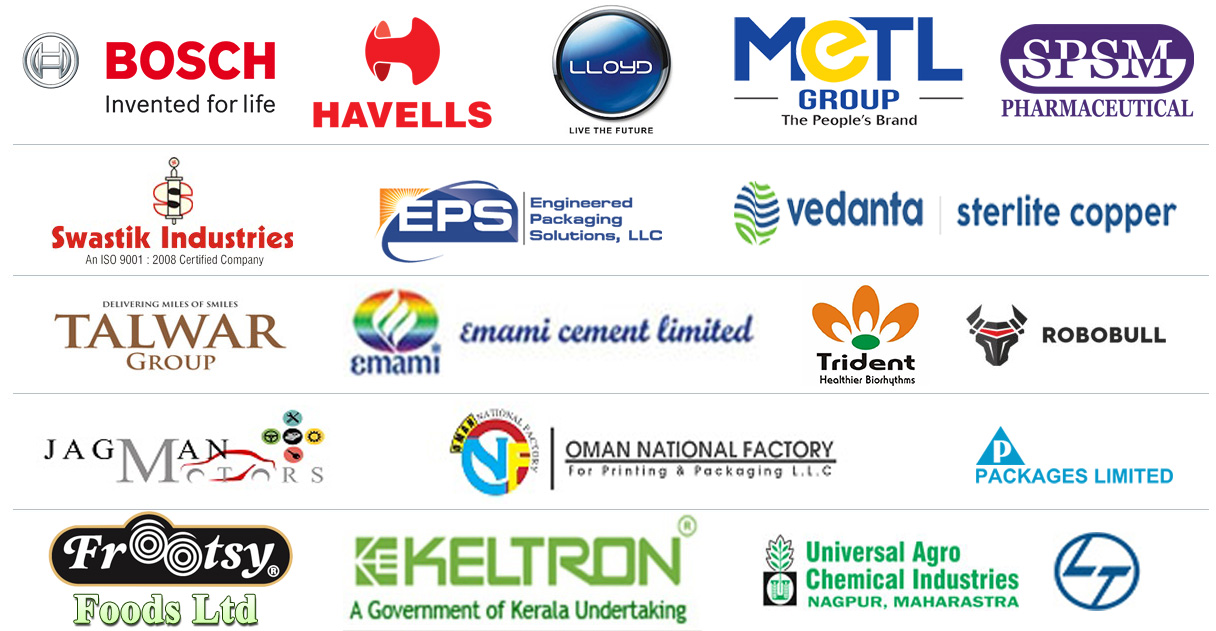
Our Approach
- Our research reports comprehensively cover Indian markets (can be modified as per your country), present investigation, standpoint and gauge for a time of five years*.
- The market conjectures are produced on the premise of optional research and are cross-accepted through associations with the business players
- We use dependable wellsprings of data and databases. What's more, data from such sources is handled by us and incorporated into the report
Why buy EIRI reports?
- Our project reports include detailed analysis that help to get industry Present Market Position and Expected Future Demand.
- Offer real analysis driving variables for the business and most recent business sector patterns in the business
- This report comprehends the present status of the business by clarifying a complete SWOT examination and investigation of the interest supply circumstance
- Report gives investigation and top to bottom money related correlation of real players/competitors
- The report gives gauges of key parameters which foresees the business execution





















